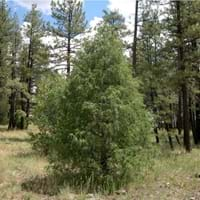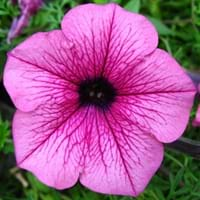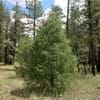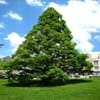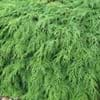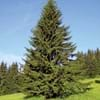Life Span
Perennial
Annual
Type
Needled or Scaled Evergreen
Flowering Plants, Shrubs
Origin
North America
South America
Types
Not available
Grandiflora Petunias, Multiflora Petunias, Wave Petunias, Superbell Petunias, Supertunia Petunias
Number of Varieties
Not Available
Habitat
Deciduous forests, Rocky areas, rocky outcrops
Terrestrial
USDA Hardiness Zone
3-7
9-10
AHS Heat Zone
7-1
Not Available
Sunset Zone
1a, 1b, 2a, 2b, 3a, 3b, 4, 5, 6, 7, 8, 9, 10, 11, 12, 13, 14, 15, 16, 17, 18, 19, 20, 21, 22, 23, 24
not provided
Habit
Narrow Upright/Fastigiate
Not Available
Flower Color
Not Available
Blue, Pink, Purple, Red, White, Yellow
Flower Color Modifier
Bicolor
Not Available
Fruit Color
Not Available
Not Available
Leaf Color in Spring
Blue Green
Golden Green
Leaf Color in Summer
Not Available
Green
Leaf Color in Fall
Blue Green
Green
Leaf Color in Winter
Blue Green
Green
Leaf Shape
Scale-like imbricate
Ovate
Plant Season
Spring, Summer, Fall, Winter
Summer
Sunlight
Full Sun, Partial Sun
Full Sun, Partial shade
Type of Soil
Clay, Loam
Loamy, Sandy
The pH of Soil
Acidic, Neutral, Alkaline
Neutral
Soil Drainage
Well drained
Well drained
Bloom Time
Early Spring, Late Winter, Mid Spring
Fall, Spring, Summer
Tolerances
Drought
Pollution
Where to Plant?
Container, Ground, Pot
Container, Ground, Pot
How to Plant?
Cuttings, Seedlings
Seedlings, Transplanting
Plant Maintenance
Medium
Medium
Watering Requirements
Does not require water in summer, Keep the Soil well drained, Medium
Keep the ground moist but not water-logged, Requires regular watering, Requires watering in the growing season
In Summer
Lots of watering
Lots of watering
In Spring
Moderate
Moderate
In Winter
Average Water
Average Water
Soil pH
Acidic, Neutral, Alkaline
Neutral
Soil Type
Clay, Loam
Loamy, Sandy
Soil Drainage Capacity
Well drained
Well drained
Sun Exposure
Full Sun, Partial Sun
Full Sun, Partial shade
Pruning
Remove damaged leaves, Remove dead branches, Remove dead leaves
Cut or pinch the stems, Do not prune during shooting season, Remove dead or diseased plant parts, Remove deadheads
Fertilizers
All-Purpose Liquid Fertilizer
All-Purpose Liquid Fertilizer
Pests and Diseases
Red blotch
Aphids, Bacterial Blight, Caterpillars, Gray mold, Leaf spot, Powdery mildew, Root rot, Spider mites, Thripes, Verticillium Wilt, Viruses
Plant Tolerance
Drought
Drought
Flowers
Insignificant
Yes
Flower Petal Number
Single
Not Available
Fragrant Bark/Stem
No
Yes
Foliage Texture
Medium
Medium
Foliage Sheen
Matte
Matte
Attracts
Flying insects, Hummingbirds
Butterflies, Hummingbirds
Allergy
Not Available
Not Available
Aesthetic Uses
Bonsai, Hanging Basket, Showy Purposes, Used for decorating walls, fences, gates, hedges, etc.
Beautification, Bouquets, Showy Purposes
Beauty Benefits
Not Available
Not Available
Environmental Uses
Air purification
Air purification
Medicinal Uses
Appetizer, Diaphoretic, Disinfectant, Diuretic, Hemostatic, Hepatic, Laxative, Sedative, Tonic
Not Available
Part of Plant Used
Fruits, Leaves, Shoots
Flowers
Other Uses
Air freshner, Pesticide, Repellent, Shelterbelt, Showy Purposes, Wax, Wood is used in construction
Showy Purposes
Used As Indoor Plant
No
Yes
Used As Outdoor Plant
Yes
Yes
Garden Design
Container, Edging, Feature Plant, Foundation, Groundcover, Hedges, Mixed Border, Topiary, Bonsai, Espalier
Bedding Plant, Container, Edging
Botanical Name
JUNIPERUS scopulorum 'Skyrocket'
Petunia
Common Name
Skyrocket Juniper
Petunia
In Hindi
skyrocket juniper
Petunia
In German
die Höhe schnellen Wacholder
Petunie
In French
monter en flèche genévrier
Pétunia
In Spanish
dispararse enebro
Petunia
In Greek
ανεβάσει στα ύψη αρκεύθου
πετούνια
In Portuguese
foguete zimbro
Petúnia
In Polish
jałowiec Skyrocket
Petunia
In Latin
skyrocket iuniperorum
Petunia
Phylum
Pinophyta
Streptophyta
Class
Pinopsida
Magnoliopsida
Family
Cupressaceae
Solanaceae
Clade
Not Available
Angiosperms, Asterids, Eudicots
Tribe
Not Available
Not Available
Subfamily
Cupressoideae
Petunioideae
Importance of Skyrocket Juniper and Petunia
Want to have the most appropriate plant for your garden? You might want to know the importance of Skyrocket Juniper and Petunia. Basically, these two plants vary in many aspects. Compare Skyrocket Juniper and Petunia as they differ in many characteristics such as their life, care, benefits, facts, etc. Every gardener must at least have the slightest clue about the plants he wants to plant in his garden. Compare their benefits, which differ in many ways like facts and uses. The medicinal use of Skyrocket Juniper is Appetizer, Diaphoretic, Disinfectant, Diuretic, Hemostatic, Hepatic, Laxative, Sedative and Tonic whereas of Petunia is Not Available. Skyrocket Juniper has beauty benefits as follows: Not Available while Petunia has beauty benefits as follows: Not Available.
Compare Facts of Skyrocket Juniper vs Petunia
How to choose the best garden plant for your garden depending upon its facts? Here garden plant comparison will help you to solve this query. Compare the facts of Skyrocket Juniper vs Petunia and know which one to choose. As garden plants have benefits and other uses, allergy is also a major drawback of plants for some people. Allergic reactions of Skyrocket Juniper are Not Available whereas of Petunia have Not Available respectively. Having a fruit bearing plant in your garden can be a plus point of your garden. Skyrocket Juniper has no showy fruits and Petunia has no showy fruits. Also Skyrocket Juniper is not flowering and Petunia is flowering. You can compare Skyrocket Juniper and Petunia facts and facts of other plants too.
